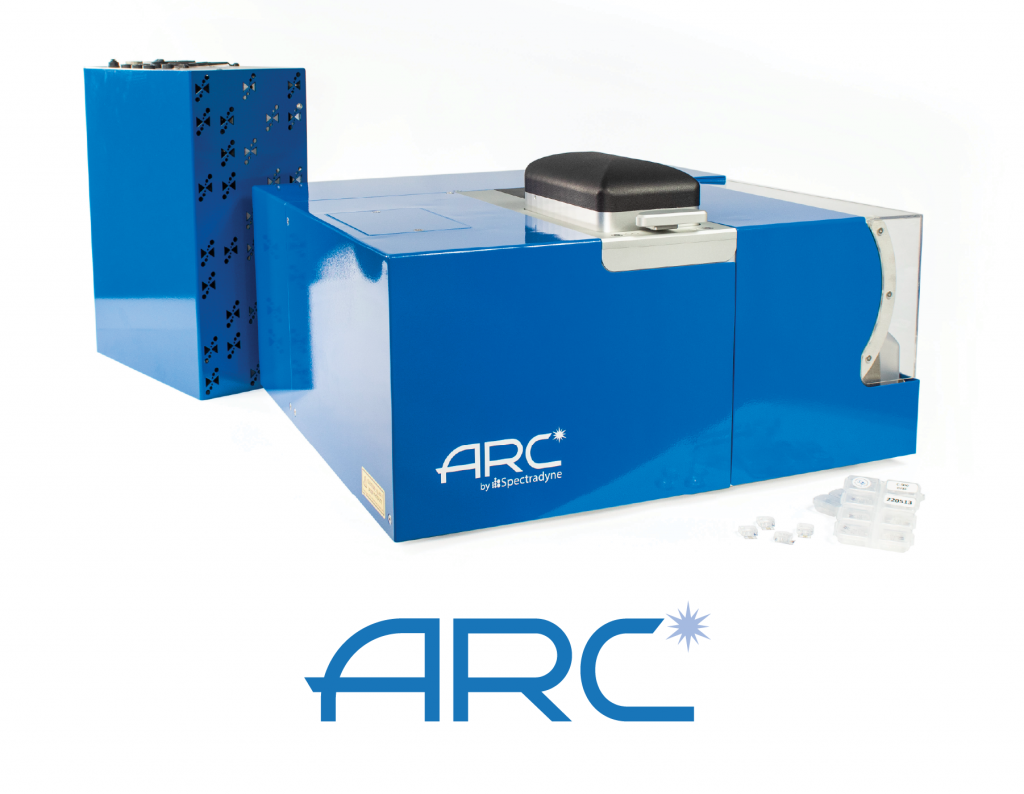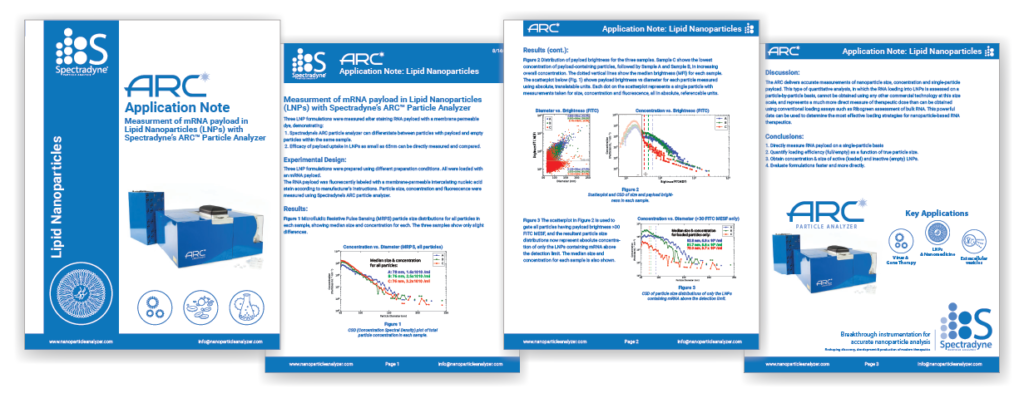Lipid Nanoparticles (LNPs) and Nanomedicine
Size, Concentration, and Payload: Three critical quality attributes in a single measurement

Accurate particle size and concentration
Payload quantification by single-particle fluorescence
Fast and easy to use: No calibration or cleaning required
See how our F-MRPS technology stacks up against other methods in Lipid Nanoparticle applications below
Accurate LNP quantification: Size, Concentration, and Payload
Lipid nanoparticles and nanomedicines are nanoparticle-enabled therapeutics. At this size scale, the size and concentration of the nanoparticles themselves directly impact the performance of the overall product: Size determines payload capacity and diffusion rates, (e.g. bioavailability) and concentration represents the total amount of drug in the formulation, namely the dose. Size, concentration, and payload therefore represent three critical quality attributes that must be accurately measured to ensure safety and efficacy of nanoparticle-based therapeutics such as lipid nanoparticles and nanomedicine.
This means that the ability to precisely measure particle size distributions for liposomes and LNPs is of critical importance. Spectradyne’s nCS1TM delivers higher-resolution measurement of particle size when compared to optical techniques like dynamic light scattering (DLS) and nanoparticle tracking. At the same time, it also delivers industry-leading concentration measurements, which are also critical because concentration correlates directly to dosage.
Spectradyne’s ARCTM combines the nCS1’s microfluidic resistive pulse sensing with single-particle fluorescence detection, allowing payload quantification together with particle size and concentration measurements.
True LNP size distributions with MRPS
Dynamic light scattering (DLS) measures average light scattering intensity across an entire sample. The above example highlights the pitfalls of this approach: DLS fails to distinguish between the three LNP formulations at all, and could not measure one of the samples.
On the other hand, Spectradyne’s MRPS measures particles one at a time to deliver rich content: High resolution size distributions and absolute concentration on any subrange of interest.
Detect rare large particles that can cause an unwanted immunogenic response and quantify complex size distributions that determine the formulation’s diffusion and bioavailability in a single measurement.
When the safety and performance of your formulation are on the line, you need more than DLS alone.
Go beyond Bulk Assays for RNA Encapsulation Efficiency
Bulk fluorescence assays for inferring RNA encapsulation efficiency such as RiboGreen and CuBit fall one step short of what you really want to know—how is RNA being loaded into my LNPs?
Spectradyne’s ARC directly measures single-particle RNA loading, as well as size and concentration, in absolute units. No wash steps, no calibration, no multiwell titration, just a 1-step stain followed by measurement on the ARC. Results in a few minutes.
Particle Loading – Novel insights in minutes
In the above example, three LNP formulations were stained for RNA payload and measured on the ARC particle analyzer to directly quantify particle size, concentration, and payload—3 critical quality attributes in one. The measurements indicate that formulation C carries significantly less RNA per particle than formulations A and B, while Formulation A contains the highest loading on a particle-by-particle basis. See the full application note here.
How our MRPS technology stacks up against DLS and NTA
Read more about LNPs and Spectradyne’s technology
Learn more below about how our technology can help easily quantify your Lipids and Lipid Nanoparticles!
- [PDF] Liposomes and lipid nanoparticle (LNPs) measurements with Spectradyne’s nCS1TM: A two-page brochure describing how to measure LNPs, with sample measurement results
- [PDF] An overview of how Spectradyne’s unique microfluidic technology is applied to nanoparticle analysis
- [PDF] Basic concepts and implementation for using resistive pulse sensing (aka Coulter counting) in a microfluidic format
- [PDF] Quantifying Lipid Nanoparticle Payload using the ARCTM Particle Analyzer
Spectradyne’s nCS1TM and ARCTM deliver the most accurate concentration and size measurements of liposomes and lipid nanoparticles available in a practical bench top solution, combined in the ARC with fluorescence measurements. Spectradyne’s nanoparticle analyzers are fast and easy to use, and require only 3 microliters of your sample to help you do better lipid science.
